We kindly inform you that, as long as the subject affiliation of our 300.000+ articles is in progress, you might get unsufficient or no results on your third level or second level search. In this case, please broaden your search criteria.
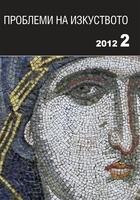
A remarkable graphic sheet from The National Gallery for Foreign Art in Sofia (Inv. no. НГЧИ – IIг-1-1263) is identified here as an etching and attributed to the French scholar and reproductive printmaker Anne Claude de Tubières-Grimoard de Pestels Levieux de Lévis, comte de Caylus, (1692-1765). The print is in mirror reversal of a pen drawing by Raphael, now at the Ashmolean Museum at Ox- ford (inv. no. WA1846.179). The drawing depicts a violent battle of nudes in a composition that is not coherently integrated, suggesting that it was a preliminary sketch. It has been considered by experts as a study belonging to the end of the Florentine period of the Raphael, around 1508. An etching identical to the print in Sofia is to be found in the so-called Cabinet de Crozat or Recueil de Crozat, two massive folio volumes published in 1729-1742 in Paris by the great French art collector Pierre Crozat (1661-1740). That edition arranges by schools a canonical selection of Italian Renaissance paintings and drawings from several major French collections, including the one of Crozat. The publication is pioneering in that it combines a systematic approach to the works (e.g. the arrangement by schools, the use of a wide range of critical scholarship on the masters and the precise reconstruction of provenance records of the works) and illustrates them with 183 repro- ductive prints commissioned for the occasion by some of the most accomplished French masters. This article makes a special note of other pioneering aspects of the Recueil – its rare hybrid printmaking techniques that combine intaglio and relief processes and its use of colored inks simulate the medium of drawing in attempt to accurately reproduce the models.
More...
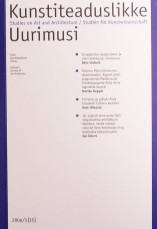
The article concentrates on the ideas of the Scottish Enlightenment architecture and their reception at the Russian Tsar's court during the second half of the 18th century. It also tries to trace the ideas of the Scottish Englihtenment architecture in the Baltic German cultural area.
More...
The article examines the cult of St. Elisabeth of Thuringia (1207-1231) and her depiction on Tallinn's altars.
More...
The article looks at the initial pictorial programme of the Tallinn Holy Kinship altarpiece. The retable was probably created around 1500 at a Brussels' workshop and commissioned for one of Tallinn's town churches. The late medieval Flemish carved altarpieces only rarely depicted the Holy Kinship as the main scene.
More...
Considered as an introduction to the topic, the article attempts to couch, in a preparatory way, the modern art historical controversy over the relative values of line and colour in the more general terms of the historical consistency of modern culture.
More...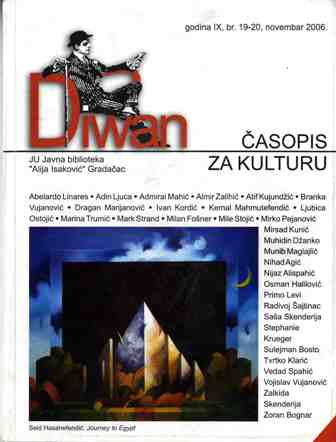
Art Brut or Outsider Art is art of mental disabled people. Dubuffet wrote studies about psychiatric art and he was a great collectionar that art. He was prefer savage, lonely and a deep subjective advanture in art then tradition art.
More...
Art criticism about the exibition of painitngs by Seid Hasanefendić, who opened on the Literary meeting Gradacac, 26.6.2006.
More...
Art criticism of exhibition of painting by Dragana Nuić-Vučković in Art Gallery "Roman Petrovic", Sarajevo, September 2006.
More...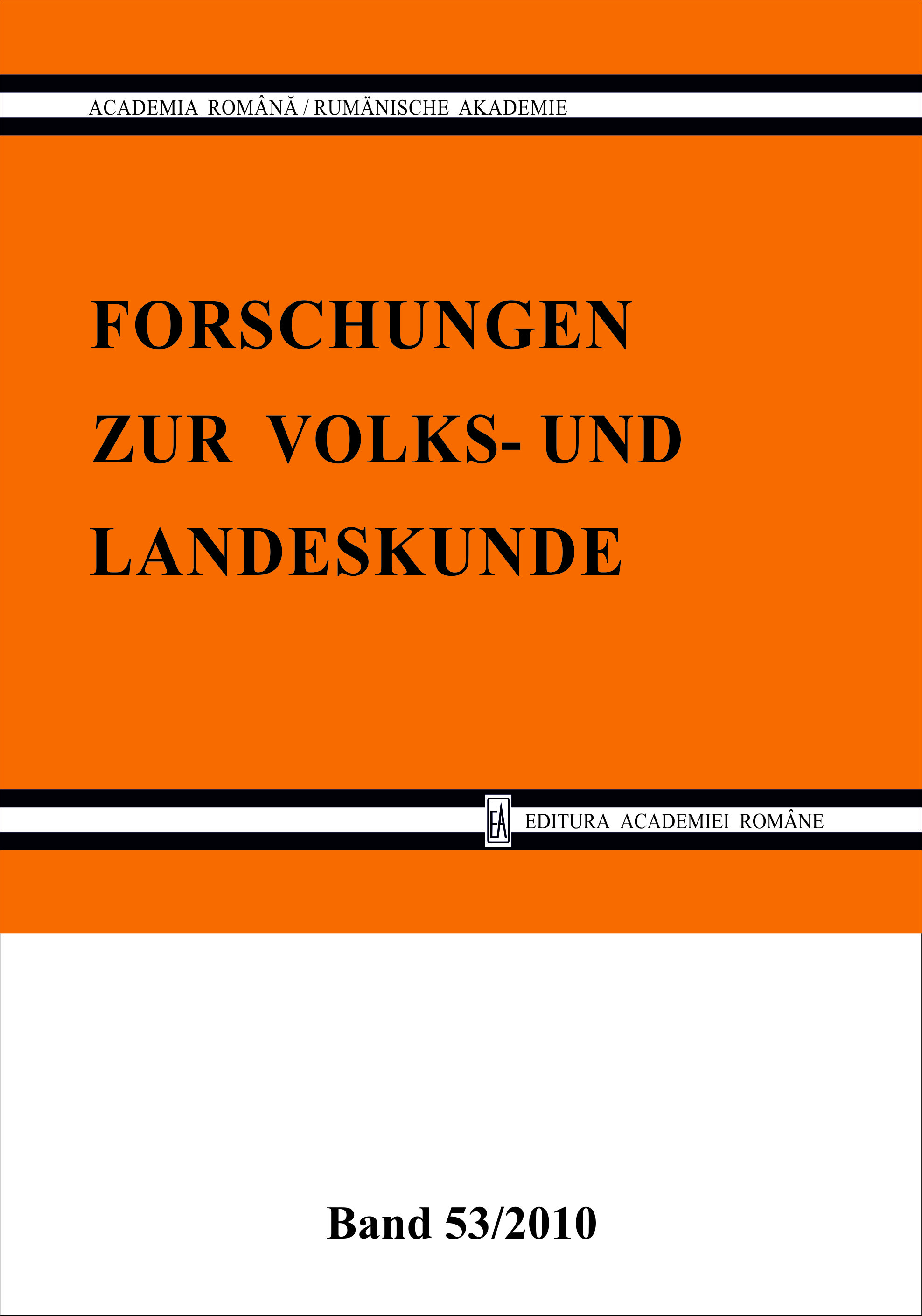
After a brief presentation of the European artistic environment at the end of the 16th century and the beginning of the 17th century, stressing especially on the Mannerism at the court of Rudolf II in Prague, the author reminds that among the painters that worked for the emperor was also Hans Rottenhammer. There were presented some biographic data about the painter born in München, then these are followed by considerations about his style – a mannerist in an Italian style. The author discusses then the paintings assigned to Hans Rottenhammer that are to be found in the Brukenthal Art Gallery, namely: Dianne and Callisto (oil on copper plate, 31 x 38 cm, inventory number 976) that was bought by Brukenthal as a piece of Italian art. Th. Frimmel (1894) considered it to be in Rottenhammer’s style, but Ludwig Baldass (1924) considered it to be a genuine work by this painter. Through the means of the correspondence and by comparison with other works belonging to this painter the author concluded that it is a genuine work by Rottenhammer. The Doomsday (oil on copper plate, 52 x 40,5 cm, inventory number 975) even if it wasn’t acquired by Brukenthal we can find it in the Catalogue in 1844, named as a painting in the style of Rottenhammer, it is still considered nowadays in this term, in spite of some resemblances with the painting having the same title in The National Gallery in London (image 1). Starting from the painting Jesus Scourge in The Städel Museum in Frankfurt (image 2), which is quite identical with the painting in The Brukenthal Art Gallery in Sibiu named Savior’s Scourge (oil on cooper plate, 29 x 23 cm, inventory number 391), the author considered, having little doubts, that the painting belonging to The Brukenthal Art Gallery is actually a replica of the one in Frankfurt, even if it was successively assigned to: Dürer’s School, the genre of Frans Francken the Old and probably Johann König
More...
The miraculous image of the Virgin Mary in Maria Radna – the latter, once a Franciscan convent and most important Catholic place of pilgrimage in the Banat region up to the present – represents a rather special case within the larger group of Christian miraculous images. Contrary to the presumption hitherto, it is not a product of the Remondini's print studio in Bassano del Grappa, but very probably that of the Carmelite Order’s own office in Rome. As scholars already pointed out, the central image clearly shows a depiction of the Holy Virgin holding the scapular of Our Lady of Mount Carmel. For a better understanding of this image, it might be useful to point out its connection with to the most important representation of the Virgin, done by Girolamo Massei, and kept in the Carmelite chapel in San Martino ai Monti in Rome. Responding to the post-Tridentine demand to show the continuity of the Catholic faith in the arts, the painting belongs to a specific type concerning the representation of the Holy Virgin, tied to the origins of the Carmelite Order: the Eléusa. However, in contrast to the painting by Massei, the representation of the Holy Virgin from Maria Radna is surrounded by painted frames. The frame below the central picture shows the sinners in the purgatory, a scene which refers to the Sabbatine Privilege, consisting in the prerogative for early liberation from the purgatory, owned by the confratres and consorores of the Carmelite Order since the 14th century. The fifteen scenes framing the other three sides of the central image are referring to miraculous interventions of Our Lady of Mount Carmel, collected and disseminated during the 17th century in handwritten or printed compilations.
More...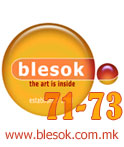

In this paper the author evaluates the level of visual literacy of Croatian politicians. Her evaluation is based on the analysis of visual material used by political parties in the pre-electoral campaign late in 2007. Assisted by students at the Academy of Visual Arts as politically independent visual experts/evaluators, she examines the visual quality of the political message, its symbolic and communicational, as well as aesthetic and ethical value, taking the examples of posters, advertisements, spot commercials and other products. Research results point to the conclusion that our political public recognizes the power of images mainly in the context of present-day visually oriented society, and that it attempts to use visual effects in communication with potential voters in order to influence their opinions. Unfortunately, the level of such communication is very low, and mostly boils down to negative comparative advertising, which, as proven in other countries, is counterproductive, because it fosters mistrust and doubt of the public regarding the politicians’ opportunities and ability to solve social problems. The visual rhetoric in politics requires an art of discourse that has a specific effect on its target group, and this in turn presupposes a high level of visual literacy of both the politicians themselves and the professionals they rely upon.
More...
The second half of XIX century was one of the most important period of the economy and culture of Rijeka.The spirit of secession appeared in the middle of Europe at the end of that century but in Rijeka some after that. In the 80’ years of XIX century the Rijeka theatre commission decided to build new theatre according to the modern middle European criteria. On April 1884 was noticed the contour of one impressive building. The big work on ceiling decoration was accredited to F ranz Matsch who with brothers Gustav and Ernst Klimt realized allegorical composition of operetta, dans, love, concert, religious and army music. The aim od this paper is to say has Gustav Klimt ( 1862-1918: the Austrian secession/ art-deco painter with one big the European and world reputation) been partipation in the vision and duty of Rijeka Theater by its architect F erdinand F ellner who said at its opening (03 October 1885): It shell be non declined destruction if for all people we couldn’t trace ways to the spiritual intuition and intelectual creation. Therefore we come up to analyse the composition, issues and simbols of the Rijeka Theatre ceiling decoration by directly observation and due very quality photographs. The ceiling decoration is consisted by six separate pictures (oil on canvas) in the golden oval frames same dimensions which surround one cone crystal lustre. Although one of the parts is also situated uper than stage it is one completed and figured composition. All pictures are made in brown tones with less dark green, black and white colours. Rhytm makes harmony beetween high potention and pacific situations. Evry picture also presents one of explicitly moral and ethic components of human being: maternality, pleasure, confort, gentleness, anxiety, friendship, concupiscence, religiosity and consultation. Conclusion is that we don’t conscious the permanent presence work of one big the European and world painter as Gustav Klimt in our environment and in its centre such as the theatre/our temple of culture- The Croation national theatre Ivan noble Zajc.
More...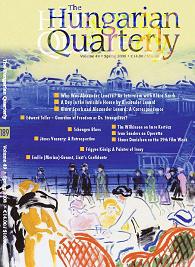

János Vaszary (1867–1939). A Retrospective Exhibition at the Hungarian National Gallery, 18 October 2007–17 February 2008. Vaszary János 1867–1939. Catalogue. Budapest, MNG, 2007, 444 pp. + Appendix, 55 pp.
More...